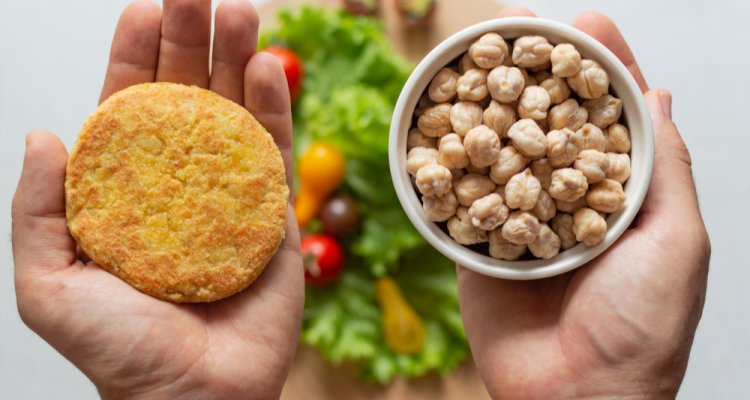
Project
Oral processing and sensory perception of plant-based meat
Understanding juiciness and texture perception in plant-based meat analogues based on its oral processing and sensory perception.
Plant-based meat analogues are food products that are designed to have meat-like characteristics, but do not contain any animal-derived ingredients (Kyriakopoulou et al., 2018). With the increasing demand for such meat analogues, the design of different plant-based meat alternatives has increased a lot over the years. However, the sensorial experience of plant-based products is still less appreciated than that of the original meat versions (Elzerman et al., 2011). A major consumer complaint is the lack of juiciness as one of the main texture drivers for liking of plant-based meat analogues. Nevertheless, there is still a lack of knowledge on how to improve and quantify juiciness and which structural factors of the plant-based foods affect juiciness perception. Food oral processing is a research approach that integrates a series of sensorial, physical, physicochemical and oral physiological methods to answer such scientific questions by clarifying the connection between human and instrumental measurements (Chen, 2009).
Aim
This project aims to apply food oral processing research methodologies to gain more insights into the mechanism that drives the perception of juiciness and texture in plant-based meat analogues.
Approach
The properties of the plant-based meat analogues will be varied in juiciness by several approaches. Different compositional and product characteristics will be quantified during different times of oral processing and linked to the sensory perception of different plant-based meat analogues.
References
1. Kyriakopoulou, K., Dekkers, B., & van der Goot, A. J. (2018). Plant-based meat analogues. In Sustainable meat production and processing (pp. 103-126). Academic Press.
2. Elzerman, J. E., Hoek, A. C., Van Boekel, M. A., & Luning, P. A. (2011). Consumer acceptance and appropriateness of meat substitutes in a meal context. Food Quality and Preference, 22(3), 233-240.
3. Chen, J. (2009). Food oral processing—A review. Food Hydrocolloids, 23(1), 1-25.